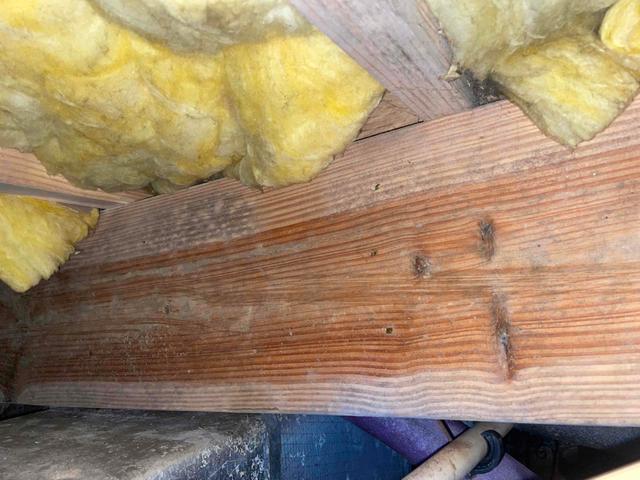
Mold and Mildew Growth
Many of the floor joists in this crawl space were covered with mold and mildew growth. This can occur on organic materials when the relative humidity reaches over 60% during warmer temperatures. Mold spores and musty odors can rise into the floors above and irritate those with allergies and asthma.

6-mil Vapor Barrier
A 6-mil vapor barrier was originally installed in this crawl space, yet there are gaps in certain areas that allow moisture to rise from the earth and into the crawl space. The moisture then elevates the relative humidity and affects the environment of the crawl space.
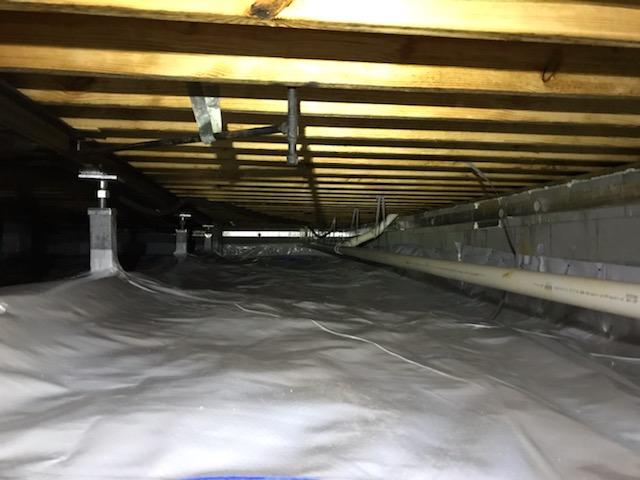
Mold Remediation
An antimicrobial, called Shockwave, was used to eliminate mold growth along any affected floor joists. This application will eliminate mold and mildew but it does not clean any staining left behind from the growth. Mold and mildew can still grow back if the relative humidity and temperature are not controlled and regulated.
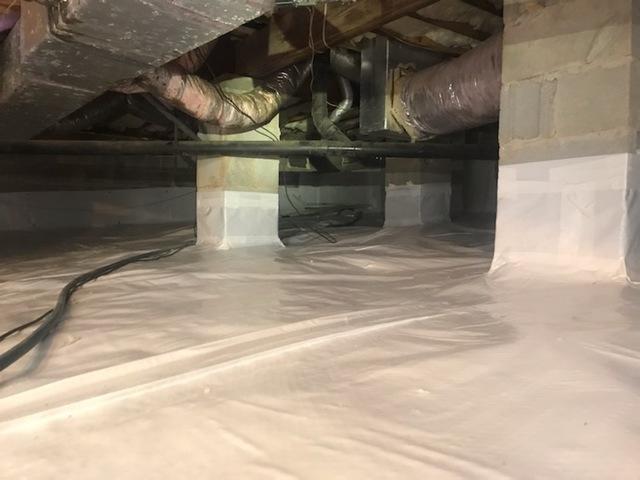
10-mil CleanSpace Light
We installed a 10-mil vapor barrier, called CleanSpace Light, over the dirt flooring of this crawl space. The CleanSpace is wrapped around all piers, sealed with vinyl tape, and mechanically fastened to the foundation walls six to eight inches above outside grade. This liner will help to prevent moisture from rising out of the earth and into the crawl space.
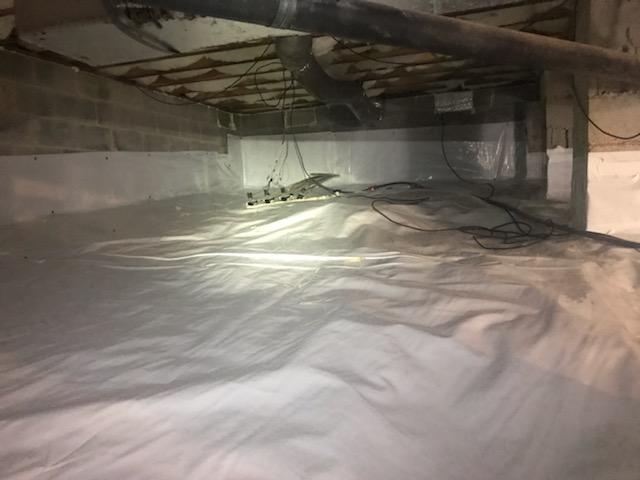
Replacing R-19 Fiberglass Batts
The homeowner opted to replace their existing fiberglass batts at this time, rather than adding insulation to the foundation walls. While it is suggested to insulate and seal over the foundation walls after the CleanSpace is installed, the homeowners have the option to add in spray foam or foam board insulation at any time. We would want to completely seal the crawl space off from any outside air and moisture influence, and insulating the walls and sealing off the open vents would help us accomplish this.
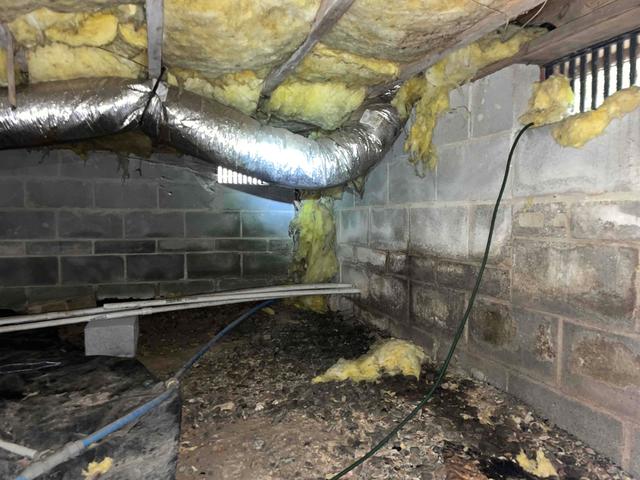
Porous Foundation Walls
The foundation walls of the crawl space are made with porous cinderblocks, which means that air and moisture can pass through them. Efflorescence was visible along the foundation walls, which suggests that moisture seep through the walls, bringing along the inner salts and sediments to the surface, creating a chalky, powdery substance. Open vents lining these walls were also allowing outside air and moisture to freely enter and affect the relative humidity and environment.


